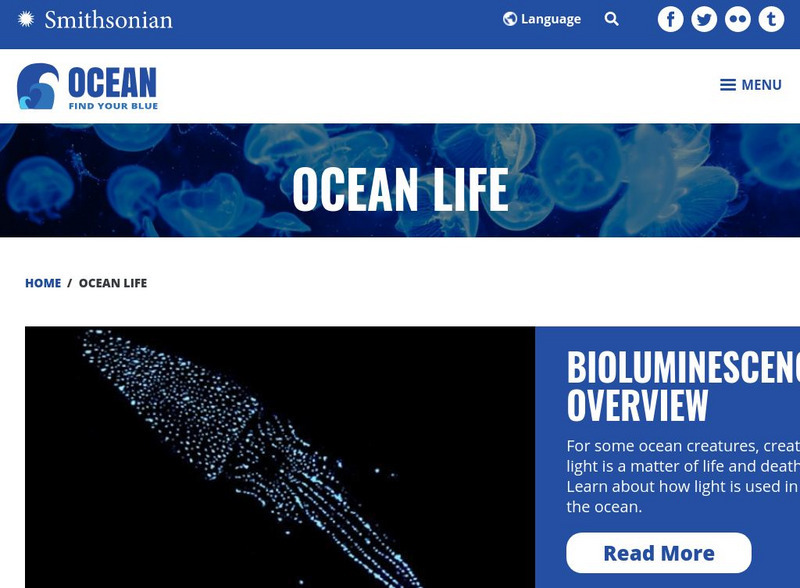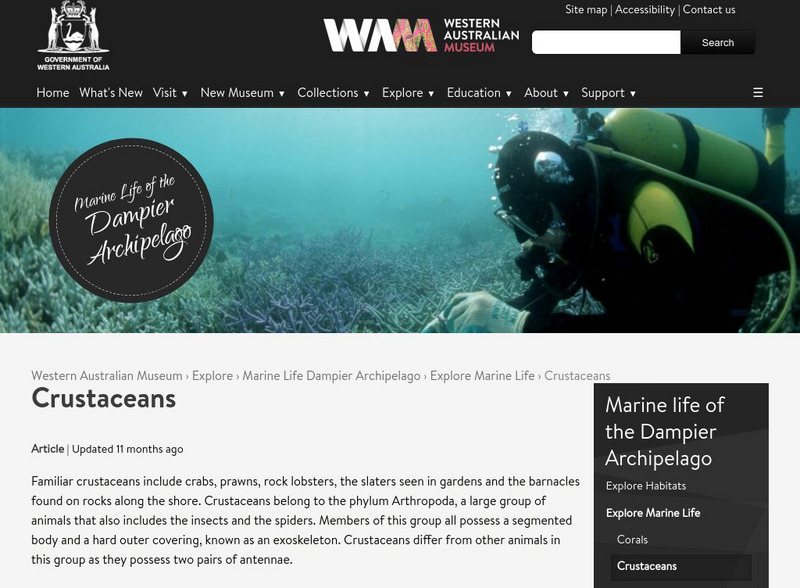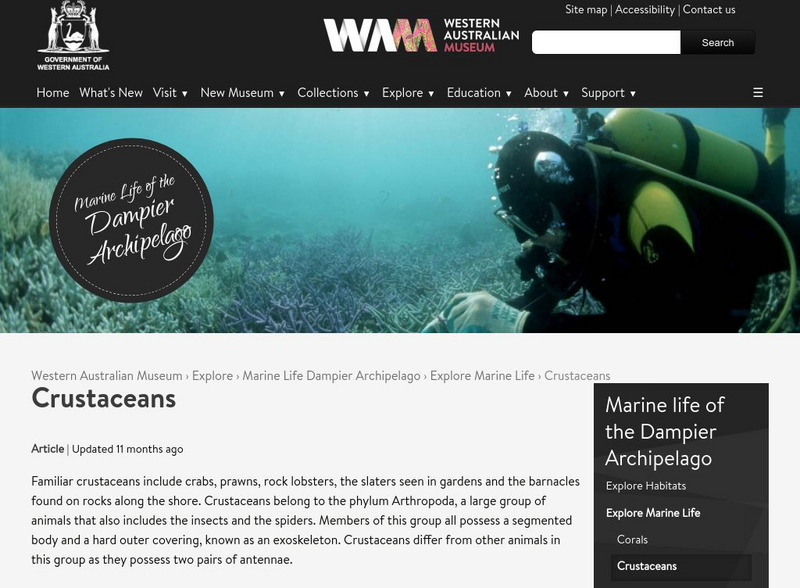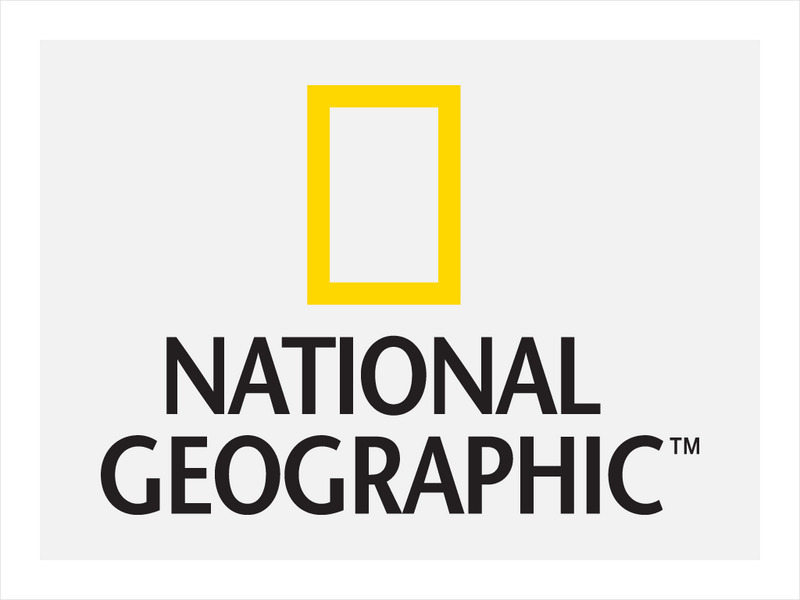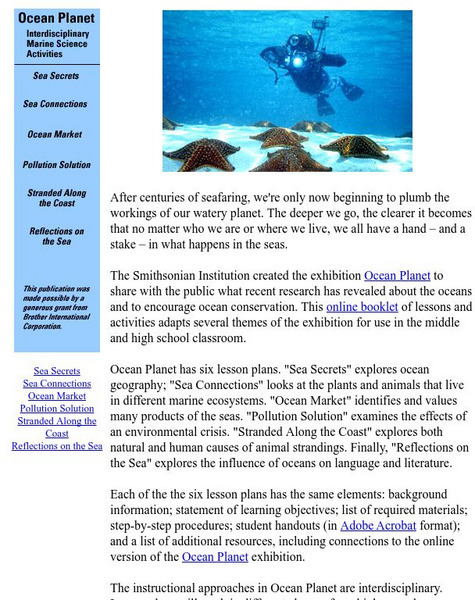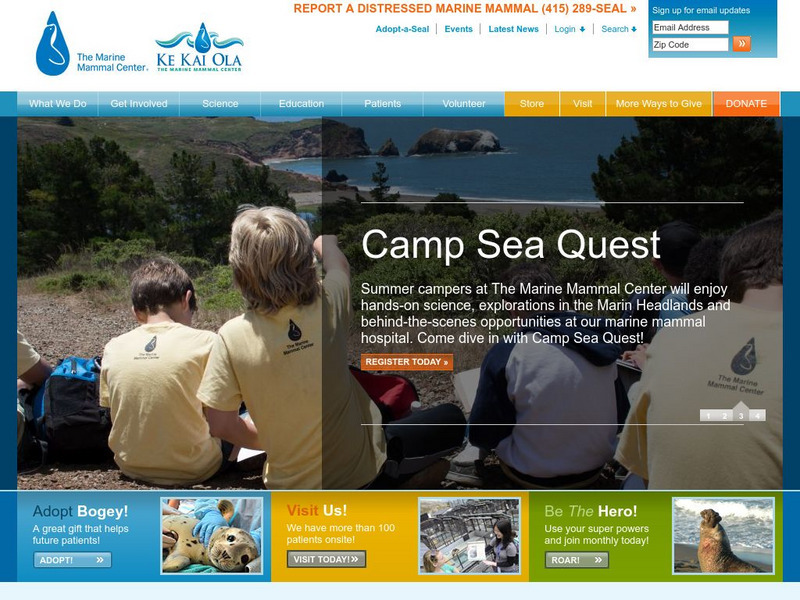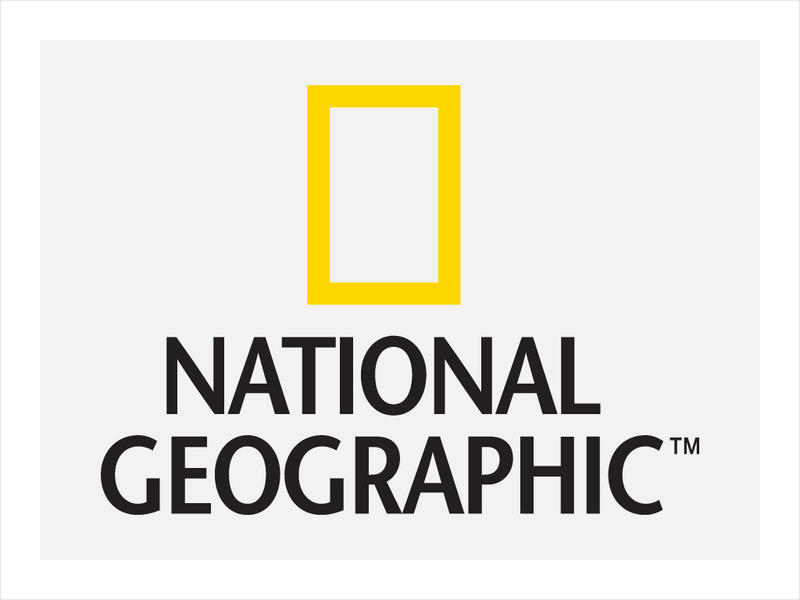American Museum of Natural History
American Museum of Natural History: Milstein Hall of Ocean Life
Tour the museum's famed exhibition hall dedicated to ocean life at this online recreation. Find videos, maps, species specimens, and images that let you experience many of the museum's resources on ocean life right from your desktop.
Smithsonian Institution
National Museum of Natural History: Ocean Portal: Ocean Life & Ecosystems
From the tiny to the titanic, from the familiar to the undiscovered, the ocean offers a stunning diversity of marine life and nearly every kind of habitat imaginable. Dive in and explore them here. Links incude stories, videos and photos...
Other
Western Australian Museum: Sponges: Marine Life of the Dampier Archipelago
Did you know that sponges are one of the simplest animals that exist? Learn about these multi-cellular animals and their importance to the marine environment.
Other
Western Australian Museum: Crustaceans: Marine Life of the Dampier Archipelago
Do you know how Crustaceans differ from other animals that belong to the Arthropod family? Find the answer to this question along with other interesting facts about this marine animal.
American Museum of Natural History
American Museum of Natural History: O Logy: Marine Biology: The Living Oceans
This resource is a place for exploring, asking questions, finding information, meeting scientists, and learning about marine ecosystems.
Society for Science and the Public
Science News for Students: Ocean Animals Have Mushroomed in Size
Article reports on the increasing size of ocean animals over the millenia. Includes a list of key vocabulary.
National Geographic
National Geographic: Marine Ecosystems and Biodiversity
In this unit students explore major marine ecosystems by locating them on maps. Students use marine examples to learn about energy transfer through food chains and food webs and then they discuss how food webs can illustrate the health...
National Geographic
National Geographic: Human Impacts on Marine Species
Students learn about three examples of human impacts on marine life: migration patterns and shipping, algal blooms and water chemistry, and marine debris. Some of these impacts are due to human activity in the ocean, and some impacts on...
PBS
Pbs Learning Media: Sea Creatures
This video segment from Nature features various sea creatures. [5:52]
National Geographic
National Geographic: Human Impacts on Marine Ecosystems
This lesson focuses on how human activities are impacting marine ecosystems. Includes handouts.
National Geographic
National Geographic: Symbiotic Relationships in Marine Ecosystems
For this lesson young scholars analyze videos to make observations about species, populations, and communities of organisms and discuss their symbiotic relationships. Then they create a hypothetical marine ecosystem and describe the...
Smithsonian Institution
Smithsonian: Ocean Planet: Interdisciplinary Marine Science Activities
Smithsonian Institution presents ?Ocean Planet: Interdisciplinary Marine Science Activities?. Through this series of six interdisciplinary lessons, students will look at such things as the organisms in different marine ecosystems, the...
Other
The Marine Mammal Center
Check out the research and current topics sections for ways that this rehabilitation center for marine mammals is using tracking methods to keep tabs on some of the patients they have released back into the wild.
National Center for Ecological Analysis and Synthesis, University of California Santa Barbara
Kids Do Ecology: Marine Mammal Pages
Learn all about marine mammals at this fun site from the National Center for Ecological Analysis and Synthesis. Explore different species, learn about migration, gather and graph marine data, and more.
Other
Marines: Becoming a Marine
Are you interested in becoming a US Marine? Explore military careers and find out what the Marine Corps is all about.
National Geographic
National Geographic: Marine Ecosystems and Biodiversity
A collection of three lessons where students learn about abiotic factors in marine ecosystems, about marine food chains and biodiversity, and about marine food webs and trophic levels. Includes handouts, website links, and a vocabulary...
National Geographic
National Geographic: Marine Food Webs
For this lesson, students learn about marine food webs and pyramids, and how energy flows through a marine ecosystem. They then research a marine organism and its role in a marine food web. The class pools their information to create a...
US Fish and Wildlife Service
U.s. Fish and Wildlife Service: Marine Turtle Conservation Fund
Seven species of marine turtles navigate the oceans. Six of these seven species are considered endangered. Learn about the Marine Turtle Conservation Act of 2004 and a little about these ancient animals and the threats to their existence.
National Geographic
National Geographic: Mapping Marine Ecosystems
Marine ecosystems are examined in this lesson. Students identify examples of different types and locate them on a world map. Includes handouts, website links, and a vocabulary list with definitions.
National Geographic
National Geographic: Marine Protected Areas Management
For this lesson, students read a case study and debate the pros and cons of a Marine Protected Area (MPA) in the region. Then they select a Marine Protected Area and develop and present a management plan for it.
Science Buddies
Science Buddies: Science Careers: Marine Architect
The marine architect is the one who designs many kinds of vessels which sail the seven seas. This Science Buddies site lays out the requirements needed to become a marine architect, as well as the education and job description. Included...
National Geographic
National Geographic: Marine Protected Areas Exploration
In this high school instructional activity, students explore Marine Protected Areas on an interactive map and compare and contrast three case studies. They learn how the MPA classification system works in the United States, apply that...
DOGO Media
Dogo News: Tiny Sea Animals May Drive Sea Currents
New research suggests that very tiny sea creatures in very huge numbers may contribute to the movement of the oceans' currents. Debate and more research are still necessary to prove this. Includes video.
American Museum of Natural History
American Museum of Natural History: O Logy: Marine Biology
Learn about marine biology, life in the ocean. It defines marine biology and provides links to games, stories, videos, and hands-on activities on the topic.
Other popular searches
- Marine Ocean Zones
- Ocean Fish Life Cycle
- Ocean and Sea Creatures
- Life in the Ocean
- Life on the Ocean
- Origin of Life Ocean

